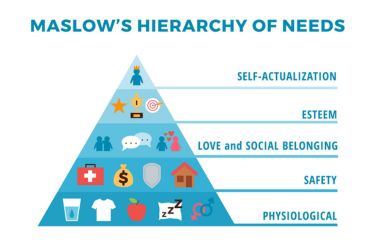Borderline personality disorder (BPD) is a complex mental health condition that can affect the way we think, feel, and relate to ourselves and others. BPD is marked by strong emotions, unstable relationships, and difficulties in controlling our moods and actions. With about 1 in 100 people living with BPD, it's more common than many of us might think.
Many people with BPD struggle with a deep fear of being abandoned, strong mood swings, and sometimes impulsive or risky behaviour. These challenges can make daily life and relationships difficult, but there is hope. With the right support and treatment, it is possible to manage symptoms and live a more balanced life.
Key Takeaways
- BPD is a serious mental illness that disrupts emotions, thoughts, and relationships.
- Recognising symptoms early and seeking help is important for managing BPD.
- Treatment and support can help us lead healthier, more stable lives.
Defining Borderline Personality Disorder

Borderline personality disorder (BPD) is a mental health condition that causes us to have difficulties with how we think and feel about ourselves and others. It leads to patterns of unstable relationships, quick mood changes, and impulsive behaviour.
Key Features of BPD
BPD is marked by a group of symptoms that can make daily life challenging.
Some of the most common features include:
- Strong, rapidly changing emotions
- Intense fears of being abandoned
- Unstable relationships with friends, family, or partners
- A shifting sense of self or identity
- Risky or impulsive actions, such as spending sprees, unsafe sex, or substance misuse
- Episodes of anger, anxiety, or sadness, often for small reasons
- Self-harming behaviours or suicidal thoughts
We often see these symptoms starting in adolescence or early adulthood. BPD affects about 1 in 100 people in the UK. The severity and pattern of symptoms can change over time and vary between individuals.
History and Evolving Terminology
The term "borderline personality disorder" dates back to the mid-20th century.
Historically, doctors thought this disorder was on the 'borderline' between neurosis (anxiety disorders) and psychosis (severe mental disorders). Over time, doctors have gained a better understanding of BPD and now recognise it as a specific and treatable personality disorder.
In the past, different names have been used for this condition. For example, the International Classification of Diseases (ICD-11) now uses the term "Emotionally Unstable Personality Disorder" (EUPD), while the Diagnostic and Statistical Manual of Mental Disorders (DSM-5) continues to use BPD. These changes aim to give a clearer description of the problems people experience.
Understanding Emotionally Unstable Personality Disorder
Emotionally Unstable Personality Disorder (EUPD) is the term used in the ICD-11, mainly in the UK and Europe. EUPD means the same disorder as BPD but places more emphasis on emotional instability and impulsive behaviour.
The ICD-11 puts EUPD in the group of personality disorders. EUPD has two main subtypes:
- Impulsive type: where impulsivity is more obvious
- Borderline type: which closely matches the description of BPD
Both subtypes share similar symptoms. The difference is in which traits are most severe. Regardless of the name, EUPD and BPD describe the same underlying condition.
Major Symptoms and Clinical Presentation

Borderline personality disorder (BPD) is marked by intense mood shifts, rash actions, and ongoing struggles in relationships. People often face uncertainty about themselves and may turn to harmful behaviours during times of distress.
Emotional Instability and Strong Emotions
People with BPD often experience dramatic swings in mood. These shifts can happen over a few hours or days. Strong emotions like anger, sadness, or anxiety may feel overwhelming and uncontrollable.
Many report feeling empty inside or having sudden emotional pain that is difficult to explain. Everyday situations, such as minor disagreements or feeling ignored, can trigger extreme reactions.
Some find it hard to calm down once they become upset. This emotional sensitivity may make it difficult to manage disappointment or criticism from others. In high-stress moments, some may even experience panic or rage that is hard for them or their loved ones to understand.
Impulsive Behaviour
Impulsive behaviour is a key symptom in BPD. People might act quickly without thinking about the effects. This could include reckless spending, unsafe sex, substance misuse, binge eating, or dangerous driving.
Sometimes, impulsiveness leads to self-harming acts or suicide attempts, especially when someone is feeling very emotional or rejected. Some may struggle with anger outbursts or walking away from relationships or jobs suddenly.
We often notice that these behaviours provide only short-term relief. In the long run, they can add to feelings of guilt, shame, or regret. It can also make relationships and daily life much harder to manage.
Common impulsive actions include:
- Overspending
- Substance misuse
- Self-harm
- Quick changes in plans or jobs
- Risky physical activities
Unstable Relationships
Unstable personal relationships are common in BPD. People may quickly switch from seeing someone as perfect to viewing them as uncaring or harmful. These shifts can happen suddenly and without clear reason.
Fear of being abandoned or left by those close to us is often very strong. Even small signs of distance or separation, like a friend not returning a message, may cause intense anxiety or anger.
We often see patterns of breaking up and making up, or having many arguments with friends, family, or partners. Some people try hard to avoid being alone, even if it leads to unhealthy or self-defeating interactions. The need for reassurance and difficulty trusting others can make relationships very stressful.
Disturbed Thinking Patterns
Disturbed thinking patterns affect how people with BPD see themselves and the world. Many feel confused about who they are or what they want in life. Self-image can change often.
At times, under stress, people may have brief episodes of paranoia or feel detached from reality. Some describe feeling disconnected from their own thoughts or emotions, a state called dissociation.
Negative thoughts, especially around self-worth, are common. People may believe they are “bad” or unlovable. This can make it hard to set goals or take part in normal activities. When combined with strong emotions and impulsive acts, disturbed thinking makes daily life more challenging for those living with BPD.
Causes and Risk Factors

Borderline Personality Disorder (BPD) develops through a mix of inherited risks, experiences in early life, and links to other mental health problems. Key influences include genetic predisposition, childhood trauma or neglect, and conditions like anxiety or depression.
Genetic and Biological Factors
Research shows that BPD often runs in families. If a close relative has BPD or another mental health disorder, such as depression or bipolar disorder, our risk may be higher.
Genetics alone do not explain everything, but they do make us more vulnerable. Brain studies find that some people with BPD have differences in areas that control emotion and impulse, such as the amygdala and prefrontal cortex. These differences may make it harder for us to manage strong feelings or resist urges.
Our brain chemistry, especially problems with neurotransmitters like serotonin, can also play a role. Low serotonin is linked to increased impulsivity and mood swings, which are common in BPD. It is important to note that genetics and biology interact with life experiences, so neither factor stands alone.
Early Trauma and Neglect
Early life experiences are key in the development of BPD. Many of us with BPD report childhood trauma, such as physical, emotional, or sexual abuse. Serious neglect, such as being ignored or not given enough care, also increases our risk.
Childhood trauma can affect how we see ourselves and trust others. It can make us feel unsafe or unwanted. These feelings can later show as fear of abandonment or intense unstable relationships.
Examples of early trauma connected to BPD:
| Type of Trauma | How It Might Affect Us |
|---|---|
| Abuse | Difficulty trusting others |
| Neglect | Problems with emotional control |
| Family Conflict | Trouble with stable relationships |
Severe or repeated trauma often makes mental health worse in adulthood. Because of this, early support and intervention are very important.
Associated Mental Health Conditions
BPD rarely exists alone. Many of us also have other mental health conditions that act as both risk factors and complications. The most common are anxiety disorders, depression, and eating disorders.
Living with long-term anxiety or depression can make us more vulnerable to BPD. These conditions may develop before or during BPD and can worsen our symptoms. For some, symptoms of mood disorders, like those seen in bipolar disorder, overlap with BPD and make diagnosis and treatment challenging.
Eating disorders, such as bulimia or binge eating, are also common. They may begin as a way to cope with strong emotions or a lack of control. When these problems occur together, recovery can take longer and become more complex.
For many, a combination of these conditions means that we need tailored treatment that addresses all aspects of our mental health.
Diagnosis and Classification

Diagnosing borderline personality disorder (BPD) involves a detailed assessment process carried out by trained mental health professionals. It is important that we follow established diagnostic tools and guidelines to distinguish BPD from other personality disorders and mental health conditions.
Assessment Process
When a person is suspected to have BPD, assessment often begins with a referral from a general practitioner to specialist mental health services. Clinicians typically use structured clinical interviews and validated questionnaires to gather information about symptoms, history, and behaviour.
Assessments focus on patterns of mood, relationships, self-image, and impulse control. We often look for evidence of emotional instability, fears of abandonment, and recurring difficulties in relationships. The involvement of family members or carers may help us get a clearer picture of present and past functioning.
According to the NICE guidelines in the UK, assessment should be thorough and consider other conditions that might explain the symptoms. Diagnosis is made only by qualified professionals, such as psychiatrists or clinical psychologists, who are trained to use criteria from standard manuals.
Diagnostic Criteria
BPD is mainly diagnosed using the Diagnostic and Statistical Manual of Mental Disorders, Fifth Edition (DSM-5) and the International Classification of Diseases, 11th Revision (ICD-11). Both require that a stable pattern of emotional instability and interpersonal difficulties be present over time and across different settings.
The DSM-5 requires at least five of the following features:
- Intense fear of abandonment
- Unstable or intense relationships
- Identity disturbance
- Impulsiveness in risky areas (e.g. spending or substance use)
- Recurrent suicidal behaviour or self-harm
- Chronic feelings of emptiness
- Inappropriate anger
- Severe mood swings
- Stress-related paranoid thoughts or dissociation
The ICD-11 refers to BPD as emotionally unstable personality disorder, borderline type, and uses criteria that are similar but not identical to the DSM-5.
Differentiating from Other Personality Disorders
Distinguishing BPD from other personality disorders can be challenging because symptoms often overlap with other conditions, such as narcissistic or histrionic personality disorder. We look for a consistent pattern of unstable personal relationships, emotional lability, and impulsivity as core signs of BPD.
It is important to check for other disorders that could better explain the symptoms, like mood disorders or complex post-traumatic stress disorder. We must pay close attention to symptom patterns, duration, and how they affect daily life.
Many people with BPD also have other mental health issues, which can further complicate diagnosis. Strict use of NICE guidelines and recognised diagnostic tools helps us to distinguish BPD from similar disorders to ensure proper support and treatment.
Treatment Approaches and Support
Effective treatment for borderline personality disorder (BPD) often includes several approaches that work together. These methods help us manage symptoms, build healthier relationships, and improve daily life.
Talking Therapies and Psychological Support
Talking therapies are the main type of treatment for BPD. The most commonly used therapies include Dialectical Behaviour Therapy (DBT) and Mentalisation-Based Therapy (MBT).
DBT combines individual therapy and group skills training. It focuses on helping us manage strong emotions, control impulsive behaviours, and improve our relationships. DBT teaches practical coping skills such as mindfulness, distress tolerance, emotional regulation, and interpersonal effectiveness.
MBT helps us understand and reflect on our thoughts and feelings, and those of others. This therapy is designed to improve our ability to understand how our emotions can affect behaviour. MBT can be offered in group or one-to-one formats.
Other psychological therapies, such as arts therapies, allow us to express emotions through creative activities. These can help with self-exploration and dealing with difficult experiences. Regular support from therapists and peers can make it easier for us to stay motivated and practise new skills outside therapy sessions.
Community Mental Health Team Involvement
Community Mental Health Teams (CMHTs) play a key role in the care of people with BPD. CMHTs bring together mental health professionals such as psychiatrists, psychologists, social workers, and nurses. They create care plans and offer ongoing support tailored to our individual needs.
We might receive regular appointments with a key worker—a mental health professional assigned to help us navigate treatment. The CMHT may offer medication reviews, risk assessments, and coordination with other services. They can sometimes provide home visits or help us access local resources.
Team members often work closely with family and other support people. This helps everyone involved understand the treatment process and manage expectations. If challenges arise, the team can adjust support quickly, making changes based on our progress or setbacks.
Crisis Management and Support Networks
People with BPD can face crises, especially when dealing with intense emotions or urges towards self-harm. Effective crisis management involves having plans in place, such as knowing who to contact or where to go for help.
Most mental health teams provide 24-hour crisis lines or rapid access to crisis teams. These services help us stabilise during emergencies and prevent hospital admissions if possible. Crisis plans might include steps like calling a support worker, attending a crisis café, or visiting a safe place.
Family and friends are often part of this network. We can involve them by sharing our crisis plans and letting them know how to support us best. Support groups, both in-person and online, give a sense of belonging and understanding from others who face similar struggles.
Care and Social Support
Support goes beyond therapy. Social care services can assist with daily activities, housing, education, or employment. We can be assessed for care and support needs by our local social services team. This might result in a support package, such as a personal assistant, access to day services, or supported accommodation.
Mental health services often work with social care to make sure support is well coordinated. Practical help can reduce stress and allow us to focus on recovery. We may also get help to improve life skills, such as budgeting or managing routines.
Having strong social support can protect our mental health. Community activities, volunteering, and peer support groups encourage us to stay connected, gain confidence, and build a better quality of life.
Living with Borderline Personality Disorder
Living with borderline personality disorder (BPD) often means dealing with intense emotions, keeping relationships steady, and managing the risk of self-harm or misuse of alcohol. With the right support, we can learn skills to help us navigate these daily challenges and work towards better mental health.
Building Stable Relationships
Relationships can feel like a rollercoaster due to BPD. Our moods might shift suddenly, and we may struggle with trusting others or fear of abandonment. This often puts a strain on our connections with friends, family, or romantic partners.
Clear and honest communication helps us manage misunderstandings. Setting healthy boundaries and discussing expectations openly reduces conflict and confusion. Family therapy or couples counselling can provide a safe place to talk about feelings and plan together.
Learning to recognise our emotional triggers is also helpful. Practising skills from therapies such as DBT (Dialectical Behaviour Therapy) lets us regulate emotions and respond calmly to stress. Trust grows when both sides feel heard and respected.
Managing Co-occurring Challenges
People with BPD often experience other mental health issues like depression, anxiety, or substance misuse such as misusing alcohol or drugs. These can make symptoms worse and increase risks, so getting help for each issue is important.
We should talk to our mental health team if we notice signs of low mood, panic, or unhealthy coping habits. Medication and therapy can both play a role in treatment. Managing sleep, nutrition, and regular routines helps increase stability and supports our recovery.
Sometimes we need support outside of therapy, like joining a peer group or talking with trusted friends. Creating healthy habits and reaching out when we are struggling helps prevent problems from building up.
Reducing Self-Harm and Risk Behaviours
Living with BPD can make us more likely to self-harm or act impulsively, including risky behaviours like misusing alcohol or considering suicide. These actions can be our way of coping with extreme emotions, but they carry serious risks.
To manage these urges, we can use safety plans and learn distraction skills, like going for a walk, calling a friend, or using a stress ball. Regular check-ins with our mental health workers help us spot warning signs early.
If we ever feel unsafe, it’s important to seek help straight away, either from our care team, a helpline, or emergency services. With support, we can learn safer ways to cope and protect our wellbeing.
Frequently Asked Questions
We often hear questions about living with borderline personality disorder, how it is diagnosed, what causes it, and what treatments can help. Understanding these areas can help us recognise symptoms, seek help, and support those affected.
What are the common symptoms of Borderline Personality Disorder (BPD)?
People with BPD usually struggle with strong mood swings and difficulty controlling their emotions. They may have unstable relationships, a shifting self-image, and a deep fear of being abandoned.
Impulsive actions are common, such as risky behaviour or self-harm. Some of us may also feel empty inside or have trouble trusting other people.
How is Borderline Personality Disorder diagnosed, according to DSM-5 criteria?
Mental health professionals diagnose BPD using the DSM-5, which sets out clear criteria. For a diagnosis, an adult must show a pattern of instability in relationships, self-image, and emotions, along with impulsive behaviour.
At least five out of nine specific symptoms need to be present for a diagnosis. These include chronic feelings of emptiness and repeated efforts to avoid being abandoned.
What are the evidence-based treatments for Borderline Personality Disorder?
The main treatment for BPD is talking therapy. Dialectical Behaviour Therapy (DBT) is the most researched and effective approach.
Other therapies like Cognitive Behavioural Therapy (CBT) and some forms of group therapy may also help. Medication is not the primary treatment, but it can be useful for some symptoms when prescribed by a qualified professional.
How does Borderline Personality Disorder differ from Bipolar Disorder?
While both BPD and bipolar disorder involve mood changes, the nature of these changes is different. In BPD, mood shifts are often triggered by events or the way we interact with others and can be brief.
Bipolar disorder features longer periods of depressed or elevated mood that are not always linked to external events. The treatment and long-term outlook are also different for these disorders.
What are the potential causes of Borderline Personality Disorder in adults?
BPD likely develops due to a mix of genetic, biological, and environmental factors. Some of us may have a family history of mental health conditions that increase our risk.
Differences in brain structure and chemicals may also play a role. However, there is not one single cause, and most people have a combination of influences.
Can childhood experiences contribute to the development of Borderline Personality Disorder?
Yes, early life experiences can increase the risk of BPD. Many adults with BPD report experiencing neglect, trauma, or unstable family relationships in childhood.
Growing up in a stressful or unpredictable environment may affect the way our emotions and sense of self develop. However, not everyone with BPD has a history of childhood trauma.





















